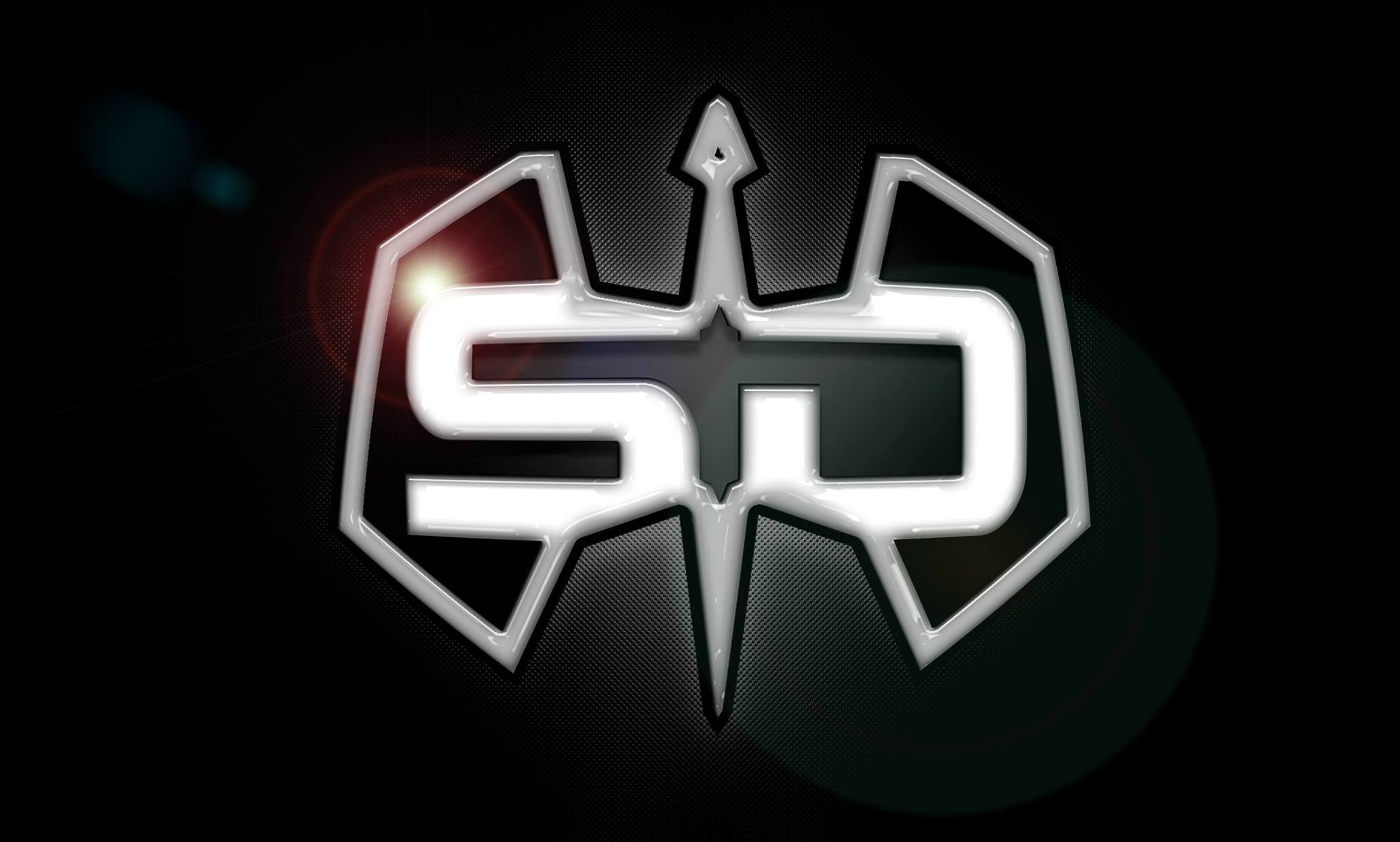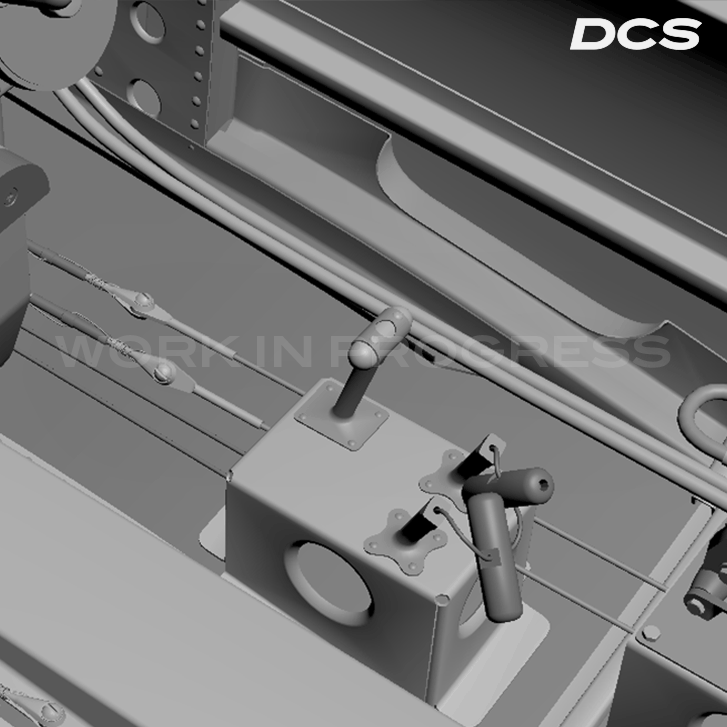-
Posts
13185 -
Joined
-
Last visited
-
Days Won
111
Content Type
Profiles
Forums
Events
Everything posted by Silver_Dragon
-

Proposal for FULLY MODELLED FLYABLE aircraft
Silver_Dragon replied to Didier Jules's topic in DCS Core Wish List
Kfir has a oficial module by Aviron 3rd party. A new Hawk T.1 will requiere a UK 3rd party or similar. Alpha jet, T-38 has moding, wait to someone 3rd party make a oficial module. Enviado desde mi CPH2197 mediante Tapatalk- 2 replies
-
- alpha jet b 🇧🇪
- alpha jet a 🇩🇪
- (and 8 more)
-
ugra media has make cold war map with parts of Germany, france, benelux, holanda, de Mark, sweden, poland and Cheqhis. Aernes has "plans" to a peninsular Yo canary islands map, OnReTech has a teaser to a Italy, Balkans map, Orbx has Kola (North skandinavia), and surely have plans to a South Skandinavia & baltic map. Ugra will convert your Normandy 2.0 map on a Modern map as ED with the Channel. Enviado desde mi CPH2197 mediante Tapatalk
- 14 replies
-
has better wait to whole earth technology the actual flat Maps has none capable to reach that distance and size. Enviado desde mi CPH2197 mediante Tapatalk
- 14 replies
-
- 1
-

-

DCS: Roadmap (unofficial - NO DISCUSSION HERE)
Silver_Dragon replied to Silver_Dragon's topic in DCS 2.9
Ugra Media Normandy 2.0 New Major update: New videos -

DCS: Roadmap (unofficial - NO DISCUSSION HERE)
Silver_Dragon replied to Silver_Dragon's topic in DCS 2.9
-
41:48 New Parachute Physics?
-
The last Mig-29 video, show configurable RSBN/PRMG with Channels and names on mission editor. Other point has the sun visor on helmet.
-

DCS: Roadmap (unofficial - NO DISCUSSION HERE)
Silver_Dragon replied to Silver_Dragon's topic in DCS 2.9
By Wags, new Mig-29A video NOTE 1: When is it coming? We are still shooting for this month, but we cannot give an exact date until testing is complete. NOTE 2: In a later video, I'll discuss the ADF Panel. NOTE 3: I am not at liberty to discuss 3rd party products. Please keep comments on topic. NOTE 4: I'm still just learning this aircraft, so my skills (particularly in in-close IFR), need work. I know. In the previous two videos, we introduced you to our MiG-29A and how to start it up, taxi, and takeoff. In this video, we’ll learn navigation in the Fulcrum and how to land it. MiG-29A navigation is quite a bit different than navigating other 4th generation aircraft like the Viper and F/A-18C, but once you get your head around it, it’s rather easy system to use. For this video, we are parked in a hot Fulcrum at Herat airfield in western Afghanistan. I’m going to explain two methods of creating your navigation points: Using basic Mission Editor functions and using the Data Transfer Card, or DTC. When using basic Mission Editor functions, you can place up to six points; the first three are assigned to the three Navigation panel aerodrome buttons and the second three are assigned to the three waypoint buttons. You cannot assign the radio beacon buttons using this method; you’ll need to use the DTC for that. When using the DTC option, you can also assign the three radio beacon navigation buttons on the Navigation panel and a lot more control of aerodrome points and waypoints. Note that the real MiG-29A does not have an actual DTC card but is rather programmed into the aircraft prior to flight. For both methods, we’ll create a navigation plan from Herat to Shindand to the south. As the Fulcrum uses an Inertial Navigation System, INS, that can drift, we’ll also discuss how to tighten the alignment using a visual fix. In addition to creating navigation points, we’ll also touch on Return to Base, Landing, and Missed Approach modes. -
The problem is going around in circles about something that "never was" and that some people believed was something else. We are talking about a product that has been "closed/locked" since it was launched on 2012.
-
The actual SA assets pack has Argentina and Chilean units: Argentina Ships ARA Santa Fe SSK ARA 25 de Mayo CV Chilean Ships Almirante Condell PFG-06 Almirante Linch PFG-07 On fact, the Specter Studios has the same with build the SA assets pack. Has no propper "modern" UK, Argentia and Chilean units. Some units will be request to get more "modern" times Argentina Air AS-332B Super Puma SA-315B Lama Bell 212 Foker F-28 A-4AR IAI-63 Pampa Land TAM SK-105 Kürassier TAM VCTP Greif M577 M584 UR-416 WZ-551 Mowag Grenadier Alvis Tactica TAM VCA TAM VCTN M106 Mortar Carrier Pampero MLR Citedef CP-30 TAM VCLC OTO Melara 56 CITEF L33 Oerlikon 20mm Oerlikon GDF Bofors 40mm RBS-70NG Sea Type-209 SSK Almirante Brown DDG Espora CVL Gowind OPV Intrepida Modified Costa Sur Chilean Air AS532AL/ALe Cougar MD530F Land Mistral 1 LAR-160 M101 howitzer OTO Melara Mod 56 Soltam M-71 M108 VBLC Mowag Piranha M167 VADS Oerlikon GDF GM-400 radar YPR-765 Sea Scorpène SSK Tromsom SSK (Type 209/1400L) Type 22 Batch 2 (Boxer class) Type 23 (Duke class) Karel Doorman-class frigate UK Air AW-159 Wildcat F-35A/B E-7 Airbus Voyager A400M Land L16A2 81mm Mortar StarStreak LML Martlet Challenger 3 Challenger 1 Ajax Boxer Bulldog Archer Artillery system Exactor 2 Sky Sabre StarStreak HVM Giraffe 1X TAIPAN Sea Vanguard SSBN Astute SSN Queen Elizabeth CV Type 45 Daring Type 23 Duke River OPV Bay LSD
-

DCS: Roadmap (unofficial - NO DISCUSSION HERE)
Silver_Dragon replied to Silver_Dragon's topic in DCS 2.9
Baltic Dragon -
I start to think ED will make a Mangusta Helo.....
-

DCS: Roadmap (unofficial - NO DISCUSSION HERE)
Silver_Dragon replied to Silver_Dragon's topic in DCS 2.9
From Heatblur Discord -

DCS: Roadmap (unofficial - NO DISCUSSION HERE)
Silver_Dragon replied to Silver_Dragon's topic in DCS 2.9
South Atlantic Map has turned to Specter Studios 3rd Party. DCS Specter Studios forum page: https://forum.dcs.world/forum/1372-specter-studios/ -

DCS: Roadmap (unofficial - NO DISCUSSION HERE)
Silver_Dragon replied to Silver_Dragon's topic in DCS 2.9
Friday newsletter -
The destroyer vehicles has only a new EDM, no a previous vehicule detroyed. That has no a bug, has a feature from many years (6-7) ago to "free" the core to make innecesary work with the destroyed units (previously was a colision). Yes, has no realistic.
-
Surely, has a F-14 module expansion, no a new module, they need use all F-14 base. On F-14 Roadmap, the F-14 early has planned.
-
Terrain modules using diferent specialized SDK (terrain develop kit) outside to the SDK ised to aircrafts modules... Yo need learn from the Scratch them to build maps, and EDM cant be used into them. Enviado desde mi CPH2197 mediante Tapatalk ED was very clear, They don was none plans to add airports outside the actual PH os NTTR maps, that requiere rebuild from the Scratch. Enviado desde mi CPH2197 mediante Tapatalk
-
Paratroopers has a core feature, no CA. and maque a "FPS" requiere a new tean and a "CA 2.0" Enviado desde mi CPH2197 mediante Tapatalk
-
ED has confirmed, on a future, use the Supercarrier carrier crew technology to make propper ground crew on bases (as CAG on base Towers). No dates . The actual APA-5D missing all "features" and animations arguments to a propper mobile ground power unit and no animations implemented on the modelviewer . Not bad If ED can build a "APU" funtionality on a vehicle and make the propper "plug-in/unplugin" feature (on fact cables will be a extension on actual sling ropes) to make more inmersive bases and other. Other poing has add the propper connectors and plugs on aircrats and others with open pannels (power, fuel, air, etc).
-
From Heatblur Discord. (last update on July 2025) Remember F-14B(U) was show on "2025 and beyond" video, with a Sparrowhawk HUD.
-

Implement FumeFX technology on DCS Core
Silver_Dragon replied to Silver_Dragon's topic in DCS Core Wish List
Foam and Bubbles Tutorial. -
CoreMods\aircraft\AircraftWeaponsPack GR66IZ (No implemented, Beluga Submunitions) GR66EG (No implemented, Beluga Submunitios) CoreMods\aircraft\chinaassetpack\shapes\vehicles GD-Load-PL5 (No implemented, GD-20 Lift Truck cargo, Missing vehicle cargo funtionality?) GD-Load-PL8 (No implemented, GD-20 Lift Truck cargo, Missing vehicle cargo funtionality?) GD-Load-SD10 (No implemented, GD-20 Lift Truck cargo, Missing vehicle cargo funtionality?) ZTZ59 (Type 59 tank, No implemented) CoreMods\aircraft\chinaassetpack\shapes\Weapons
-
Review DCS W Directories: World/Shapes 3M54E + booster (from some years ago and never implemented. 887 Kilo sub?). 3M54E1 + booster (from some years ago and never implemented. 887 Kilo sub?). 7M-1 (Aim-7M. Deprecated?) 9M32 (9K32 Strela-2/Sa-7 Grail) 9M36 (9K34 «Strela-3»/Sa-14 Gremlin) 9M55 (Strangle, use same rocket to simulate 9M55F & 9M55K) 9M82 (Old Lomac/FC Sa-22) 9M83 (Old Lomac/FC Sa-23) 9M119 (Deprecated?). 9M119_Svir (Deprecrated? 9M133 Kornet?) 48H6E2 (48N6E2 S400 missile?, very old) AGM-65I (AGM-65A?) AGM-78 AGM-84 (Deprecrated?) AGM114 (Deprecrated) AGM-114 (Deprecrated) AGM-123 (Old Lomac/FC AGM-123 Skipper) AGM-130 (Never implemented. F-15E?). AIM-120A (Never implemented) AN-M66 (Never implemented) AN-M69 WP (Never implemented) BetaB 250 (Old Lomac/FC, antirunway) BGM-109E + booster (No implemented?) CATM-9X (No implemented) CATM-88 (No implemented?) CATM-120C (No implemented) CBU-100 (No implemented?) CBU-24B (No implemented, Similar 3D model to CBU-52 with name changed on texture). CBU-78 GATOR (Never Implemented, Minelayer system). Cluster_E6R2 (Never Implemented, M69 WW2 Firebomb). DRA (Decrepated? pod) durandal (Decrepated). GBU-15 (Old Lomac/FC Never implemented). GBU-22 (Old Lomac/FC Never implemented). GBU-27 (Never implemented?) gl-bomba (Old Lomac/FC Never implemented, Depth charge?, PLAB-250-120?) grab-raketa (Decrepated). malahit (Old Lomac/FC Never implemented, P-120 Malakhit [SS-N-9 Siren] from disapear Nanuchka-class corvette LC). MINE_BLU-91 (Never implemented). MINE_BLU-92 (Never implemented). MINE_BLU-92_coil (Never implemented). Mk-77 (Never implemented, Fire Bomb). Mk-40 (Never implemented, DST Mine). Mk-82a (Decrepated). ODAB (Old Lomac/FC Never implemented, ODAB-500PM FAE-Blast bomb) PB-250 (Old Lomac/FC Never implemted, OF-250 MARS?) PULA (Old Lomac/FC implemented as generic artillery proyectile, to Decrepated). R-37 (Old Lomac/FC Never implemented, Mig-31?) Rastrub (Old Lomac/FC Never implemented, Rastrub Anti-Ship Complex [SS-N-14b Silex], ASW Standoff Weapons, carry AT-2U/-2UM ASW/ASuW Torpedo / On Kirov ship). RBK-500 SHOAB (Never implemented). RBK-500 SPBE-D (Never implemented). RBK-500U BETAB (Never implemented RBK w/ BETAB-M, antirunway). RBK-500U OFAB (Never implemented, RBK w/ OFAB-50UD) Strela-2M (Old Lomac/FC, Never implemented, decrepated? Sa-7b) t-Mk-18 (Old Lomac/FC, Never implemented, bomb) ub-32M1 (Old Lomac/FC, Decrepated) UPK-23-25 (Old Lomac/FC, Decrepated) V-611 (Old Lomac/FC, Never Implemented, M-11 Shtorm [SA-N-3 Goblet], from Old Kerch [Kara cruiser]) x-15 (Old Lomac/FC, Never Implemented, Kh-15 [AS-16 Kickback]) x-23 (Old Lomac/FC, Never Implemented, Kh-23 Grom [AS-7 Kerry], implemented on Leatherneck/M3 Mig-21Bis) x-23L (Old Lomac/FC, Never Implemented, Kh-23 Grom [AS-7 Kerry] laser guided) x-28 (Old Lomac/FC, Never Implemented, Kh-28 Nisan-28 [AS-9 Kyle] Antiradar) x-55 (Old Lomac/FC, Never Implemented, Kh-55 RKV-500 [AS-15 Kent] Cruise missile) x-59MK (Never Implemented, Kh-59MK Ovod-MK [AS-18 'Kazoo] Cruise missile) ZAB-500 (Old Lomac/FC, Never Implemented, incendiary bomb)
-

Suggestion: Su-25A Full Fidelity after the MiG-29A FF?
Silver_Dragon replied to R_0xD's topic in Su-25 for DCS World
Has claimed by ED as others, but actualy has no confirmed, yet. Of course as Wags has talked, if resources, time, dev team and available info. I think that sooner or later all FC aircraft (A-10A/F-15C/Mig-29A/G/S/Su-25A/Su-27S/Su-33) will come to DCS World as full fidelity modules sooner or later.



